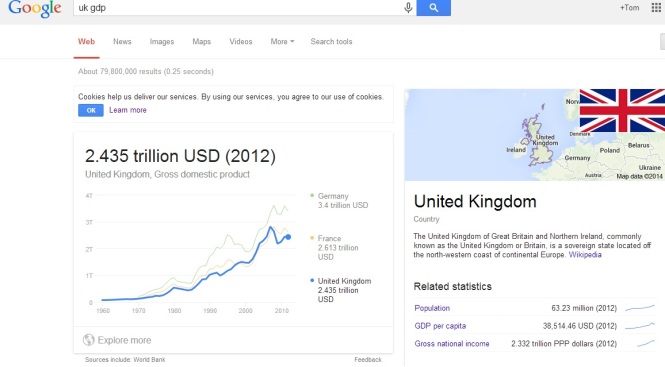This article by Angela Monaghan for the Guardian outlines the UK’s GDP growth reports from 2013 – particularly the improvements throughout the fourth-quarter: http://www.theguardian.com/business/2014/jan/28/uk-economy-2013-fastest-growth-fourth-quarter-gdp
But what does it mean if GDP is rising and why is it a sign that we are recovering from recession?
First off, let’s establish the meaning of GDP – Gross Domestic Product.
Gross (Total/pre-tax)
Domestic (Home country i.e. not foreign)
Product (Goods/services produced)
GDP is one of the most important measures of economic performance; it is the value of all the final goods and services which are produced in a country. The UK posts their GDP figures quarterly and if the value of GDP for the current period exceeds the previous period then the economy is said to be growing.
If you Google search UK GDP you will get a figure for the current gross domestic product within the UK which is around 2.5 trillion US Dollars. The graph below (taken 17/02/2014) shows the significant growth of the UK’s GDP and the drastic drop following the 2007 recession.
Rising GDP simply means that the economy is expanding as the Guardian explains; the increase in the number of goods and services being produced is a reflection of a healthy economic model where people are spending more and unemployment is likely to be falling. Although it may create rising inflation, as mentioned in my previous blog, this is just a sign that an economy is growing.
